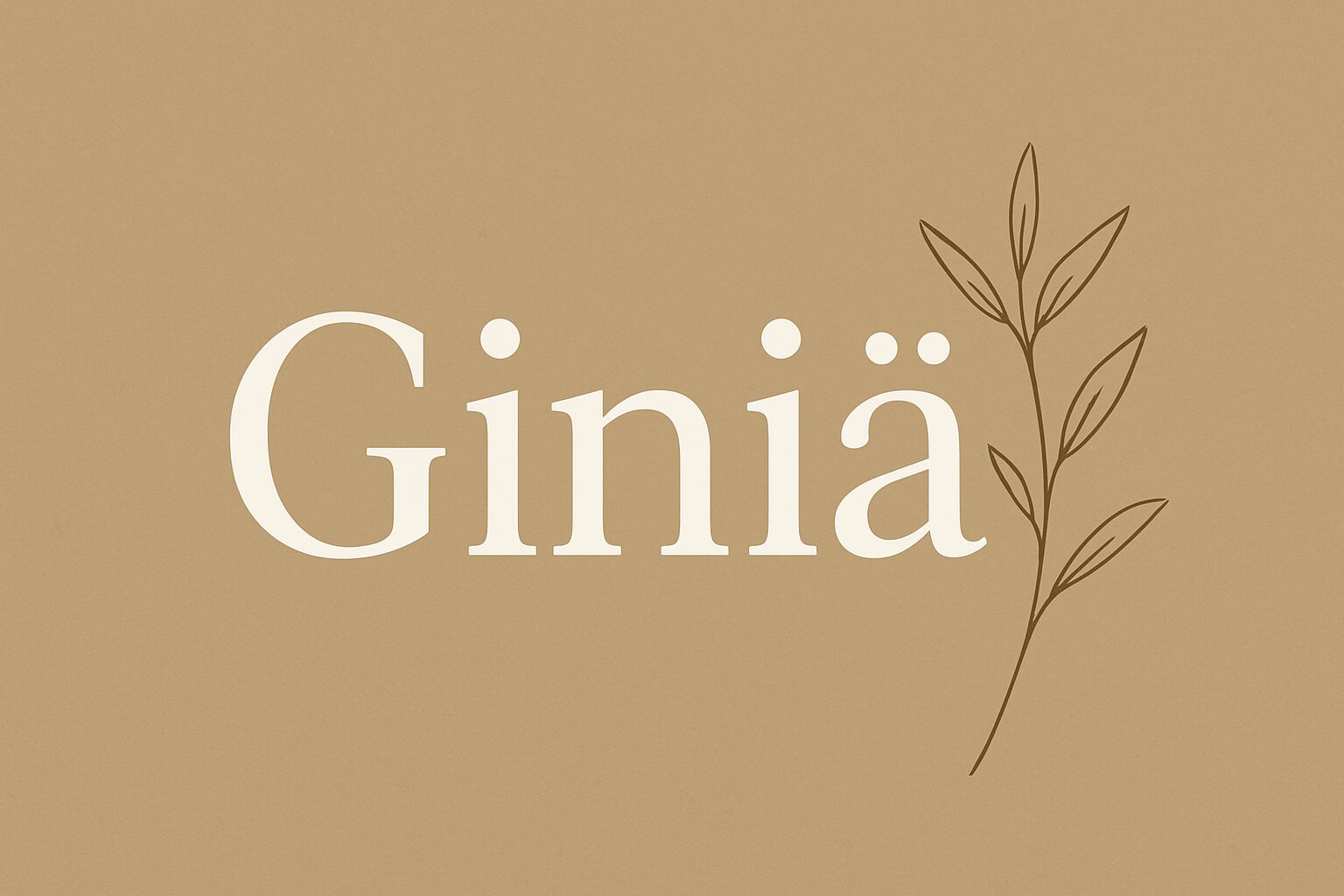What is Giniä? The Modern Word That Feels Like a Movement
Giniä is a modern, flexible neologism that has emerged as a cross-disciplinary symbol for elegance, balance, and emotional clarity. Unlike traditional words rooted in a single linguistic lineage, Giniä functions as a conceptual canvas—usable as a brand name, a lifestyle cue, or an artistic identity. Its appeal lies in its versatility: it can be minimal and practical, or rich with symbolic meaning.
Because Giniä is short, memorable, and visually distinctive (thanks to the umlaut), it’s ideal for digital branding, usernames, and aesthetic logos. In an era where emotional resonance and personal branding matter, the word offers creators and brands an opportunity to claim a unique, SEO-friendly identity. Its neutrality across major languages also helps it travel culturally without baggage.
RELATED: What is RWU UAR? Everything You Need to Know
The True Meaning of Giniä
At its core, Giniä has no single definition — and that is intentional. It’s a word shaped by context: as a brand identity it signals uniqueness; as a lifestyle it suggests simplicity and intentionality. This deliberate openness gives Giniä semantic flexibility while preserving consistent themes like authenticity and calm.
Symbolically, Giniä stands for emotional clarity, refined aesthetics, and creative reinvention. Culturally, it borrows the feel of Scandinavian minimalism and modern linguistics, aligning with global movements like slow living, minimalism, and mindful design. It’s less a dictionary term and more a cultural cue—an invitation to feel and to craft meaning.
Linguistic Roots and Pronunciation
Giniä’s etymology is modern and synthetic. The presence of the umlaut (ä) evokes Scandinavian languages, though there’s no formal root in Finnish, Swedish, or Estonian. Many creators interpret it as a stylized blend—possibly nodding to words like “genius” or “ginia”—but it remains a constructed word: a neologism crafted for emotional and visual impact rather than historical lineage.
Pronunciation is straightforward: /ˈgɪni.ɑː/ or “jee-nee-ah.” The terminal ä gives a soft, open vowel—an “ah” sound like the ‘a’ in “sofa.” This melodic flow is important: phonetic clarity helps a term succeed as a brand or personal identity.
When platforms don’t support diacritics, Ginia is the common fallback. Gi Niä with a space emphasizes a two-part identity. All variations retain the core emotional resonance, though the umlauted Giniä often feels more premium and distinctive in visual branding.
Why Giniä Feels Modern and Timeless
The umlaut is more than decoration; it signals craft and internationality. In visual branding, the diacritic conveys thoughtful design—an immediate cue of Scandinavian-inspired minimalism and modern linguistics. The umlaut differentiates the word visually and semantically, helping it stand out in search results and social feeds.
Giniä’s balanced syllables and soft vowel ending create an emotional resonance: it sounds gentle, intentional, and refined. That pleasant aural quality, combined with visual symmetry, makes it suitable for aesthetic logos, creative communities, and wellness brands seeking emotional authenticity.
Cultural Significance of Giniä
Although new, Giniä echoes timeless ideas—balance, harmony, and ritual—found across ancient cultures. It resonates with values of communal sharing, meaningful rituals, and a holistic approach to life (mind, body, spirit). This resonance makes Giniä feel familiar even when it’s new.
Giniä has moved quickly through digital art culture and creative communities, appearing in usernames, collaborative projects, and aesthetic-driven brands. As a cultural symbol, it’s used to imply thoughtful curation, intentional design, and creative identity without heavy semantic baggage.
Giniä is a philosophy in miniature: choose less, craft more, and feel deeper. It’s a lens for personal growth and modern spirituality that prioritizes emotional clarity and intentional living.
Giniä as a Lifestyle Concept
Living the Giniä life means embracing simplicity and creating space for intentional action. It’s about decluttering—not only physical spaces but digital noise, obligations, and habits that undermine focus. Creativity becomes a practice, not a sporadic event.
Giniä sits at the intersection of mindfulness and minimalism. Practitioners apply mindful rituals—meditation, journaling, and slow cooking—to foster emotional clarity. These practices align with personal growth strategies that reduce anxiety and increase purposeful living.
Daily rituals influenced by Giniä might include a short morning reflection, intentional meals using local ingredients, and device-free creative time. Such practices promote digital wellness, calm the nervous system, and strengthen personal branding by aligning behavior with values.
Giniä in Branding and Digital Identity
Giniä works brilliantly as a brand name because it’s short, unique, and memorably aesthetic. It signals refined brand identity and sits well in visual systems—an advantage for aesthetic logos and sleek packaging. Its neutral cultural connotations also make it safe for global markets.
From an SEO perspective, Giniä is a goldmine: its uniqueness means low competition and high potential to rank for brand searches. Using SEO-friendly keywords like “Giniä meaning” or “Giniä lifestyle” in titles, headers, and meta descriptions helps establish authority quickly.
A digital branding strategy around Giniä should include consistent username trends (e.g., @ginia.studio), clear naming conventions, and cohesive visual aesthetics. Pairing Giniä with clear messaging about intentional living and creative expression strengthens authenticity.
Examples: a minimalist fashion label called Giniä Studios, a travel log named Gi Niä Wanders, or an art collective called The Giniä Circle—each uses the term to communicate balance, creativity, and thoughtful curation.
Giniä in Art, Design & Creative Expression
Artists and designers adopt Giniä as a personal signature because it conveys originality without prescriptive meaning. In digital art culture, the word becomes a tag that unites creators around shared values: minimalist expression, emotional transparency, and peer collaboration.
Giniä aligns closely with design philosophies that emphasize balance and negative space. Whether used in product design, photography, or UI work, its minimalist connotations champion clarity, readable typography, and elegant composition.
Visually, Giniä suggests muted palettes, clean grids, and soft edges—perfect for branding assets, website headers, and packaging that seek calm and sophistication.
Giniä in Technology & AI
Soft, human-sounding names perform better in user-centered design. Naming an AI assistant or personalized app “Giniä” implies a gentle, wellness-first approach to tech—contrasting with robotic or functional names.
Giniä fits the trend of emotional technology—tools designed for digital wellness, personalized recommendations, and mindful interaction. Brands that prioritize user trust will benefit from such human-centered naming conventions.
Expect to see Giniä in wellness apps, personalized apps, and AI assistants that guide routines, track mood, or suggest creative exercises—embedding the brand philosophy into daily interaction.
Giniä in Food Culture & Culinary Simplicity
In culinary circles, Giniä represents a culinary minimalism—meals that emphasize local ingredients, seasonal produce, and the story behind food. It’s about savoring intentional meals rather than overconsumption.
Chefs who adopt Giniä-inspired menus prioritize sustainable food practices, short supply chains, and slow cooking. The result is food that feeds both body and narrative—shared meals that encourage connection.
Restaurants and pop-ups use Giniä as a concept: small tasting menus, slow-prep techniques, and communal tables that mirror the Giniä philosophy of mindful, meaningful dining.
Real-World Case Studies
A minimalist brand—Giniä Studios—could focus on timeless garments with sustainable fabrics, simple cuts, and ethical supply chains. The brand’s visual identity reinforces the Giniä principles of quality over quantity.
A travel account branded as Gi Niä Wanderers would showcase slow travel, mindful itineraries, and local cultural immersion—appealing to audiences seeking purposeful exploration.
An artist collective titled The Giniä Circle can promote collaboration without ego, where creators publish work anonymously under one shared identity—strengthening creative communities and emphasizing collective practice.
SEO Value of Using Giniä
Because it’s rare and distinctive, Giniä faces minimal SERP competition. Early adoption—using the term in page titles, headers, and meta descriptions—helps secure strong ranking signals. It’s ideal for brand-driven SEO strategies.
Use Giniä in your URL slugs (ginia or ginia-studio when umlauts aren’t supported), H1/H2 tags, image alt text, and schema markup. Pair with long-tail variations such as “Giniä lifestyle meaning” to capture informational intent.
Ways You Can Use Giniä Today
For Personal Growth
Adopt Giniä as a journaling lens: reflect on what brings clarity and intentionally remove distractions. Use short daily rituals to enhance mindfulness and personal growth.
For Creative Work
Use Giniä as an artistic signature or project title. Encourage minimal composition, emotional transparency, and iterative creation that prioritizes meaning.
For Business & Branding
Use Giniä for product lines, brand identity, and marketing messaging. Pair it with concise storytelling that emphasizes values like sustainability and mindful consumption.
For Digital Content
Use Giniä across social platforms as a consistent hashtag, aesthetic motif, and content pillar to build digital cohesion and SEO visibility.
Future of Giniä
Giniä has the potential to become a cultural shorthand similar to hygge or zen, especially because it captures lifestyle, design, and emotional clarity in a single, brandable word. Its adoption depends on creators and brands consistently embedding it in meaningful contexts.
Expect Giniä to appear in wellness apps, creative collectives, and slow travel experiences. Design languages inspired by Giniä will emphasize calm interfaces, muted palettes, and human-centered functionality.
Summary
Giniä matters because it offers an accessible way to name intentionality—whether for a brand, a lifestyle, or a creative practice. It helps people and organizations focus on meaning, not volume.
Adopting Giniä is an invitation: craft less, feel more, and design with empathy. It’s a practical philosophy that translates easily into daily rituals, products, and digital identity.
RELATED: What is Jyokyo? All You Need to Know
FAQs About Giniä
What is the meaning of Giniä?
Giniä is a flexible, modern neologism that signifies elegance, balance, and emotional clarity. Its meaning is shaped by how people use it—brand, lifestyle, or philosophy.
How do you pronounce Giniä?
Common pronunciations are “jee-nee-ah” or “gih-nee-ah,” with the umlaut “ä” sounding like the ‘a’ in “sofa.”
Can I use Giniä as a brand name?
Yes. Giniä is ideal for branding because it’s unique, memorable, and globally neutral. Use consistent naming conventions and SEO-friendly keywords to protect and promote your brand.
Is Giniä a real word from a specific language?
No. Giniä is a modern creation with stylistic nods to Scandinavian languages due to the umlaut, but it’s fundamentally a neologism.
Why is Giniä popular in creative fields?
Because it offers creators a distinctive aesthetic identity that aligns with minimalism, mindfulness, and creative expression—all highly valued in contemporary digital culture.


